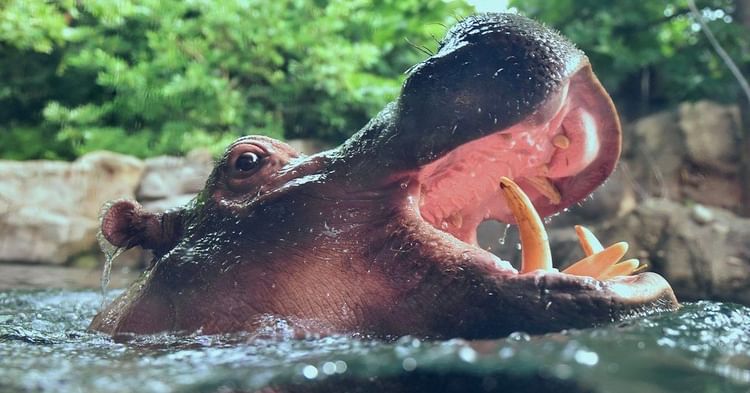Summary:
– Hippo tusks never stop growing throughout their lives.
– Hippo tusks are not used for eating but mainly for fighting.
– Genetics, hormones, and diet influence the growth of hippo tusks.
– Hippo tusks can grow to 51 inches long and weigh up to 77 pounds.
– The ivory trade threatens hippo populations and their tusk growth.
When we think of hippos, we often imagine their massive bodies, wide mouths, and fearsome jaws. But did you know that their tusks hold a fascinating secret? Hippos have long, curved canine teeth, known as tusks, that never stop growing throughout their lives. In this article, we will dive into the unique and intriguing aspects of hippo tusks and explore their purpose, growth, and challenges.
Unlike elephants, whose tusks serve various functions like digging for food and water, defense, and social display, hippo tusks have a more singular purpose – fighting. These massive creatures rely on their tusks to establish dominance and defend their territory from rivals. Although they are not used directly for eating, their tusks play a crucial role in the hierarchy of the hippo world.
The growth of hippo tusks is a complex process influenced by genetics, hormones, and diet. Just like human teeth, the tusks of hippos are made of dentine covered by a layer of enamel. They continuously grow from the base throughout the hippo’s life, adding new layers yearly.
On average, male hippo tusks can grow up to 51 inches long, while female tusks tend to be shorter, around 20 inches. These dental marvels can weigh up to a staggering 77 pounds! Imagine carrying that weight on your face every day.
The growth rate of hippo tusks is not uniform and varies between individuals. Genetics, age, and diet significantly determine fast a hippo’s tusks will grow. Older hippos generally have longer tusks due to the accumulation of growth layers.
Interestingly, a hippo’s diet can also influence its tusks’ size and growth rate. Hippos are herbivores, primarily feeding on grasses and aquatic plants. However, their diet lacks the abrasive properties that help wear down their tusks naturally. As a result, captive hippos with access to softer foods may experience more rapid tusk growth than their wild counterparts.
While the growth of hippo tusks is fascinating, addressing the conservation challenges these animals face is crucial. Illegal poaching and the ivory trade significantly threaten hippo populations and their tusk growth. In some regions, hippos are hunted for their teeth, contributing to the decline of their numbers.
To protect these incredible creatures and ensure their tusks continue to captivate us, raising awareness about their conservation is imperative. By supporting initiatives that combat wildlife trafficking and promoting sustainable practices, we can safeguard the future of hippos and the diverse ecosystems they inhabit.
In conclusion, hippo tusks are a wonder of nature, with their continuous growth and unique purpose. They serve not only as weapons in fierce battles but also provide insights into the biology and behavior of hippos. However, their existence is threatened by illegal poaching, emphasizing the importance of conservation efforts. Let’s cherish the remarkable tusks of these magnificent animals and work towards preserving their splendor for generations to come.
*****
Source Description
Hippo tusks never stop growing throughout their lives and are not used for eating but mainly for fighting.

